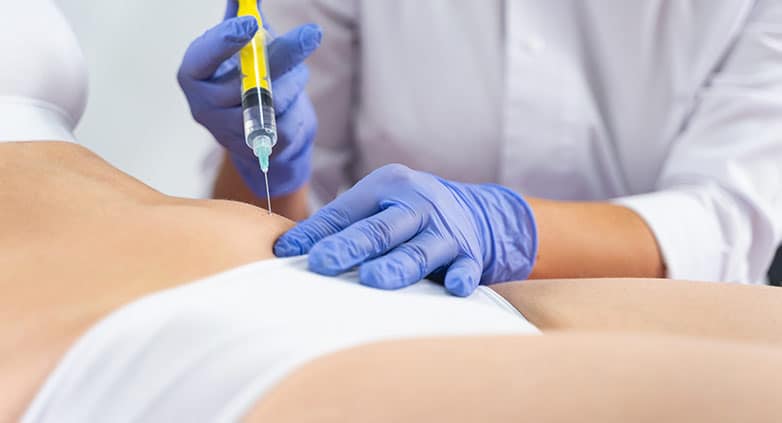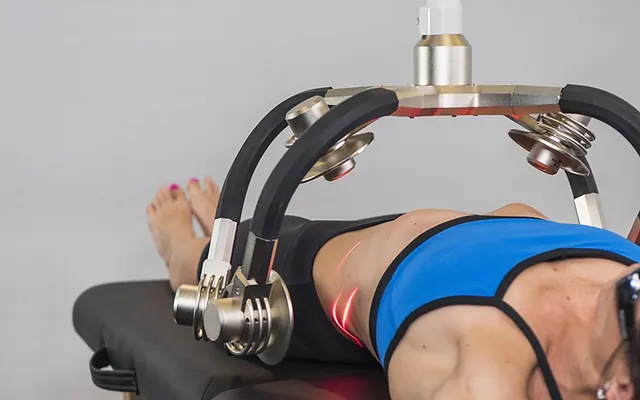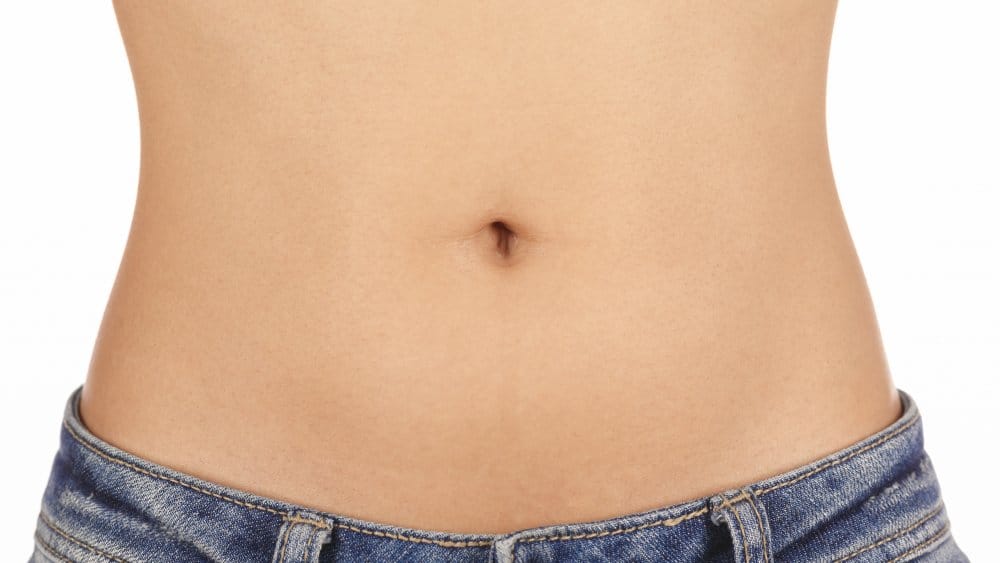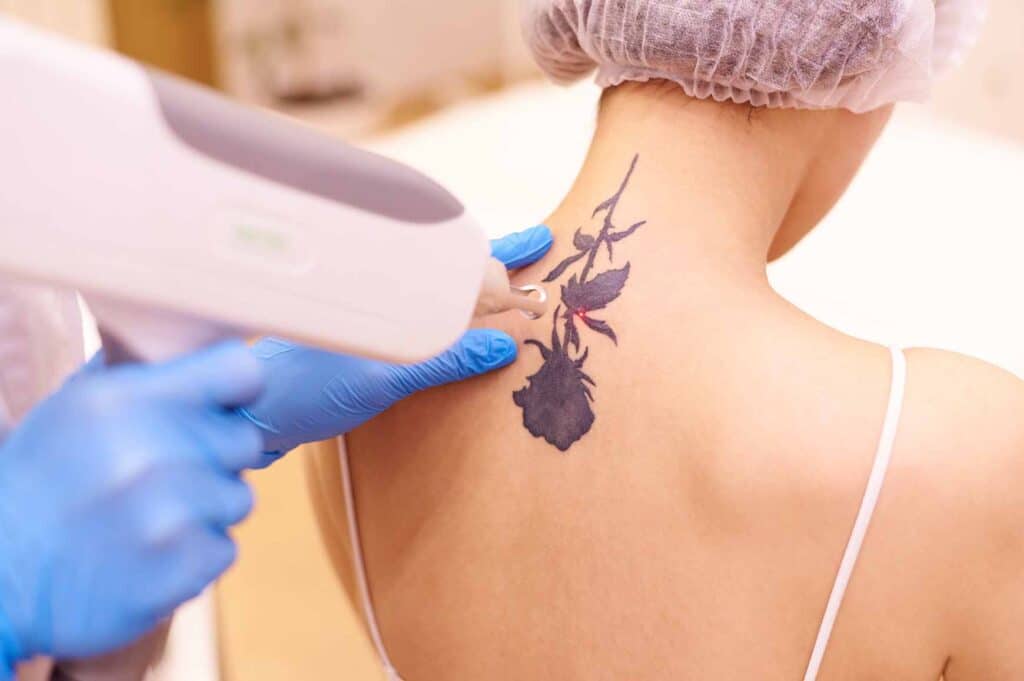Did you know that over 80% of people seek non-surgical options for facial rejuvenation? Nanofat injection techniques have emerged as a game-changer in the world of aesthetic medicine. These advanced methods use tiny fat particles to enhance skin quality and restore volume. They offer a natural solution with minimal downtime and impressive results.
Patients love the idea of using their own body fat for rejuvenation, making this technique safe and effective. With growing popularity, understanding nanofat injections is crucial for anyone considering cosmetic enhancements. This post will dive into the latest techniques, benefits, and what to expect during the procedure. Get ready to discover how nanofat injections can transform your look naturally.
Understanding Nanofat Injection
Definition
Nanofat grafting is a minimally-invasive procedure. It closely resembles liposuction. This technique uses fat from your body to enhance areas that need volume or rejuvenation.
Fat is harvested from a donor site, usually the abdomen or thighs. The process ensures that the fat cells remain viable for use in the treatment area.
Three-Step Process
The nanofat injection involves a three-step process:
- Fat Removal: A small amount of fat is extracted using a thin cannula. This step is similar to traditional liposuction but requires less fat.
- Cleaning of Fat Cells: After extraction, the fat undergoes a purification process. This removes impurities and isolates healthy fat cells. The goal is to prepare the fat for injection.
- Injection into Treatment Site: Finally, the purified nanofat is injected into the desired area. This can be for facial rejuvenation, breast enhancement, or other cosmetic purposes.
Each step is crucial for ensuring the success of the procedure. Proper technique maximizes results and minimizes complications.
Alternative Names
Nanofat injections are known by several other names. These include fat transfer, micro-lipo injection, and autologous fat grafting. Each term refers to the same basic concept of using one’s own fat for cosmetic enhancement.
Understanding these terms helps patients communicate effectively with their healthcare providers. It also aids in recognizing the procedure’s growing popularity in aesthetic medicine.
Benefits
This technique offers various benefits. First, it uses your body’s own fat, reducing the risk of allergic reactions. Second, it provides natural-looking results compared to synthetic fillers.
Patients often experience minimal downtime after the procedure. Many return to their daily activities within a few days.
Considerations
Despite its advantages, some factors should be considered before undergoing nanofat injections. Not everyone is a suitable candidate for this treatment. Individuals with certain medical conditions or those who smoke may face increased risks.
Consulting with a qualified professional is essential before deciding on this procedure. They can provide personalized advice based on individual health needs.
How Nanofat Works
Natural Tissue
Nanofat grafting uses natural tissue harvested from the patient’s body. This method reduces the risk of allergic reactions. Since the tissue comes from the patient, it is biocompatible. This compatibility lowers the chances of complications. Patients often experience fewer side effects compared to synthetic fillers.
The process begins with liposuction to collect fat cells. The fat is then processed to create nanofat. This involves breaking down the fat into smaller particles. These tiny particles are rich in stem cells and growth factors.
Growth Factors
Growth factors play a crucial role in nanofat injections. They help stimulate healing and tissue regeneration. These proteins signal cells to grow and multiply. They also promote new blood vessel formation. This process is called angiogenesis.
Stem cells found in nanofat contribute significantly to its effectiveness. They can transform into various cell types, aiding in tissue repair. Stem cells enhance the overall results of the injection. Their presence helps rejuvenate the treated areas effectively.
Fibrin collagen matrix also supports the injected nanofat. It acts as a scaffold for new cells to grow on. This matrix helps maintain structure and stability after injection.
New Collagen Growth
The procedure stimulates new collagen growth in the skin. Collagen is essential for maintaining skin elasticity and firmness. As we age, collagen production decreases, leading to sagging skin.
Nanofat injections prompt the body to produce more collagen naturally. This leads to improved skin texture and appearance over time. Patients often notice long-lasting effects after treatment.
Results may vary based on individual factors such as age and skin condition. However, many patients report visible improvements within weeks of treatment.
Longevity of Effects
The long-lasting effects of nanofat injections set them apart from other treatments. The natural components work together to prolong results. Patients can enjoy enhanced skin quality for months or even years after treatment.
Regular follow-ups may be necessary to maintain optimal results. Some patients opt for touch-up sessions to boost their outcomes further.
In summary, nanofat injection techniques harness the body’s own resources. By using natural tissue, they minimize risks while promoting healing and rejuvenation. The combination of growth factors, stem cells, and a fibrin collagen matrix creates a powerful solution for skin revitalization.
The Phases of Nanofat
Harvesting Fat
Fat harvesting is the first step in the nanofat injection process. Surgeons extract fat from a donor site on the patient’s body. Common areas for fat removal include the abdomen, thighs, or flanks. A small incision allows a cannula to suction out the fat.
The amount of fat harvested varies based on individual needs. Typically, a few ounces are sufficient for treatment. This phase does not require extensive downtime. Patients can usually return home the same day.
Processing Fat
After harvesting, the next phase involves processing the fat. This step cleans and prepares the fat cells for injection. The surgeon uses a centrifuge or filtration system to separate viable fat cells from unwanted materials.
This separation is crucial for effective results. It removes blood, oil, and debris. The remaining product is a concentrated form of nanofat. This processed fat contains stem cells and growth factors that enhance healing.
Processing typically takes about 30 minutes. The surgeon ensures that the final product is safe and ready for injection.
Injecting Fat
The final phase is injecting the processed nanofat into the treatment area. Surgeons use a thin needle or cannula for this step. They inject small amounts of nanofat into specific layers of skin or tissue.
Precision is key during this phase. Surgeons aim for areas needing volume or rejuvenation. Common treatment areas include the face, hands, and scars.
Patients can expect immediate results after injection. Swelling may occur, but it usually subsides within days. Over time, the body integrates the nanofat, leading to lasting improvements.
Nanofat injections offer benefits beyond cosmetic enhancement. They promote skin rejuvenation and improve texture. The presence of stem cells aids in tissue repair and regeneration.
In summary, each phase of nanofat injection plays a vital role in achieving successful outcomes. From harvesting to processing and finally injecting, careful techniques ensure optimal results.
Nanofat Processing Techniques
Cleaning Methods
Fat cells require careful cleaning after harvesting. This process removes impurities and unwanted materials. Common methods include centrifugation and filtration.
Centrifugation separates fat from blood and other fluids. The fat rises to the top, allowing for easier collection. Filtration uses specialized filters to eliminate debris. Both methods ensure that only pure fat is processed.
Cell Viability
Maintaining cell viability is critical during fat processing. Healthy fat cells lead to better outcomes in treatments. Damaged cells can reduce effectiveness and increase complications.
Techniques such as gentle handling and temperature control help preserve cell integrity. Keeping the harvested fat at optimal temperatures prevents cell death. This careful approach ensures that the nanofat remains functional for injections.
Advancements in Technology
Recent advancements have improved fat processing techniques significantly. New devices enhance the efficiency of cleaning and purifying fat cells. For instance, automated centrifuges provide consistent results with minimal human error.
Innovations in filtration systems also contribute to safety. These systems can filter out smaller particles, ensuring cleaner fat. Improved technology reduces the risk of introducing contaminants into the body.
New protocols for processing have emerged as well. They focus on reducing processing time while maintaining quality. Faster processing means patients experience less discomfort during procedures.
Equipment and Tools
Several tools are essential for effective nanofat processing. High-quality syringes are used to collect and inject the fat. Specialized centrifuges ensure proper separation of components.
Advanced filtration units help maintain sterility and purity. These tools play a vital role in ensuring successful outcomes in treatments.
Clinical Applications
Nanofat injections have various clinical applications. They are frequently used in cosmetic procedures, such as facial rejuvenation. The technique can also aid in treating scars and wrinkles.
Research continues to explore new uses for nanofat injections. Studies show promising results in regenerative medicine, particularly for joint injuries. The ability to repair damaged tissues opens doors to innovative treatments.
Applications in Aesthetic Procedures
Treatment Sites
Nano-fat injection techniques are popular in various aesthetic procedures. Common treatment sites include the lips, under-eye areas, cheeks, and hands.
Lips benefit from enhanced volume and shape. The under-eye area sees improvements in hollowness and dark circles. Cheeks gain a youthful fullness, while hands receive rejuvenation to reduce signs of aging.
Skincare Concerns
Specific skincare concerns addressed by nano-fat grafting include scars, wrinkles, and volume deficiency. Scars can be smoothed out using this technique, leading to improved skin texture. Wrinkles diminish as the injected nano-fat promotes collagen production. Volume deficiency is corrected, restoring a more youthful appearance.
Patients often seek solutions for sagging skin and hollow areas. Nano-fat injections provide natural results without synthetic fillers. This method uses the patient’s own fat, reducing the risk of allergic reactions.
Versatility
The versatility of nano-fat grafting extends beyond just facial treatments. It plays a significant role in body rejuvenation as well. Areas like the breasts and buttocks can also benefit from this technique. Fat grafting enhances volume while maintaining a natural look.
In addition to cosmetic uses, nano-fat has therapeutic applications. It aids in healing post-surgery or injury by improving blood flow. Patients experience faster recovery times with reduced swelling.
Nano-fat injections also support skin health. They hydrate and nourish the skin, making it appear healthier overall. This dual action of enhancing aesthetics while promoting skin vitality makes nano-fat an attractive option.
Benefits of Nanofat in Facial Rejuvenation
Natural Appearance
Nanofat injection techniques provide a natural look and feel. The process uses tiny fat particles, which integrate smoothly into the skin. This technique preserves the natural contours of the face. Patients often report looking younger without appearing overdone. The subtlety of nanofat grafting enhances facial features without altering them drastically.
This method draws on the body’s own fat. It reduces the risk of allergic reactions or rejection. The use of one’s own tissue means results appear authentic. Many patients appreciate this aspect, as they desire a refreshed appearance that looks like themselves.
Minimal Recovery Time
Recovery is typically quick with nanofat injections. Most patients experience minimal downtime. They can return to daily activities within a few days. Swelling and bruising are usually mild compared to other procedures.
The reduced recovery time also encourages more people to consider this option. Many find it appealing because they do not want extended absences from work or social events. This efficiency makes nanofat an attractive choice for busy individuals seeking facial rejuvenation.
Reduced Risk of Complications
The risk of complications is lower with nanofat techniques. Since the procedure uses small amounts of fat, it minimizes trauma to surrounding tissues. This leads to fewer side effects compared to traditional fat grafting methods.
Patients often express relief knowing that the chance of serious complications is reduced. This safety factor adds to the overall appeal of nanofat injections in aesthetic procedures.
Long-Lasting Results
Results from nanofat injections are long-lasting due to collagen stimulation. The injected fat encourages the body to produce new collagen in the treated areas. This process helps maintain volume and elasticity over time.
Tissue integration plays a crucial role in achieving lasting effects. The body accepts the injected fat, allowing it to blend seamlessly with existing tissues. Patients can enjoy their rejuvenated appearance for months or even years after treatment.
Regular follow-up treatments can help sustain these results. Many practitioners recommend maintenance sessions every 6 to 12 months. This ongoing care ensures patients continue to benefit from their initial investment in facial aesthetics.
Long-Term Results and Patient Satisfaction
Longevity of Results
Results from nanofat injections can last several years. In many cases, patients enjoy these effects for up to a decade. The longevity stems from the regenerative properties of the fat cells used in the procedure. These cells continue to produce growth factors and support tissue repair over time.
Patients often report that their skin appears smoother and more youthful long after the treatment. This enduring effect makes nanofat an appealing option for those seeking facial rejuvenation.
Importance of Weight Stability
Maintaining a stable weight is crucial for preserving results. Fluctuations in weight can affect how fat is distributed in the body. If a patient gains or loses a significant amount of weight, it may impact the appearance achieved through nanofat injections.
A consistent weight helps keep the skin tight and reduces the risk of sagging. Patients should focus on healthy eating and regular exercise to maintain their results. This approach not only benefits the aesthetic outcomes but also promotes overall health.
High Patient Satisfaction
High patient satisfaction rates are common with nanofat injections. Many individuals appreciate the natural look that these treatments provide. Unlike synthetic fillers, nanofat integrates seamlessly into the skin. This integration leads to subtle yet effective results.
Patients often express happiness with how their appearance improves without looking overdone. They feel more confident and satisfied with their reflections in the mirror. The positive feedback highlights the effectiveness of this technique.
Real-Life Experiences
Many patients share their stories about how nanofat changed their lives. One woman noted that after her treatment, she felt ten years younger. She received compliments from friends and family, boosting her self-esteem significantly.
Another patient mentioned how easy the recovery was compared to other procedures. Minimal downtime allowed her to return to daily activities quickly. Such experiences reinforce why nanofat injections are growing in popularity.

Suitable Candidates for Nanofat Grafting
Good Health
Individuals in good health are prime candidates for nanofat grafting. This procedure requires a robust body to heal effectively. Those with chronic illnesses or serious medical conditions may face higher risks during recovery. Healthy candidates typically enjoy faster healing and better results.
Youthful Appearance
Many people seek nanofat injections to achieve a youthful appearance. This technique can restore volume and smooth out wrinkles. It works well for those who want to rejuvenate their facial features. Candidates often desire a natural look without the use of synthetic fillers.
Under-Eye Hollows
Under-eye hollows can make someone appear tired or older than they are. Nanofat grafting is an excellent option for addressing this issue. The procedure adds volume beneath the eyes, reducing shadows and creating a more refreshed look. Many individuals find this change enhances their overall appearance.
Poor Skin Quality
Poor skin quality affects many people as they age. Factors like sun exposure, smoking, and genetics contribute to this problem. Nanofat injections can improve skin texture and tone. They stimulate collagen production, which helps restore elasticity. Candidates looking for smoother skin often benefit from this treatment.
Volume Loss
Volume loss is common with aging and weight fluctuations. It leads to sagging skin and hollow cheeks. Nanofat grafting provides a solution by replacing lost fat in specific areas. This technique offers long-lasting results compared to traditional fillers. Individuals wanting to regain facial fullness should consider this option.
Scars and Fine Lines
Nanofat injections also help those with scars and fine lines. This method can improve the appearance of acne scars or surgical scars on the face. The injected fat promotes healing and regeneration of the skin. Candidates seeking to reduce fine lines around the mouth and eyes find this technique effective.
Personalized Consultation
A personalized consultation is essential for determining suitability. A qualified practitioner evaluates each candidate’s unique needs and goals. During this meeting, patients can discuss their concerns openly. This step ensures that expectations align with what nanofat grafting can achieve.
Alternatives to Nanofat Treatments
Micro-lipo Injection
Micro-lipo injection is another fat transfer technique. It involves removing small amounts of fat from areas like the abdomen or thighs. This method uses a thin cannula, resulting in less trauma and quicker recovery. The harvested fat can then be injected into areas needing volume, such as the cheeks or under the eyes.
This technique offers several benefits. It provides natural results since it uses the patient’s own fat. There is also less risk of allergic reactions. However, micro-lipo may not provide enough volume for larger areas. It requires a surgical procedure, which carries inherent risks.
Facial Fat Rejuvenation
Facial fat rejuvenation is similar to nanofat grafting but focuses on restoring lost volume in the face. Surgeons extract fat from other body parts and inject it into specific facial areas. This technique can improve wrinkles and restore youthful contours.
The advantages include long-lasting results and a natural look. Patients often experience minimal downtime compared to traditional facelifts. However, this method can also have drawbacks. The success of fat survival depends on proper technique and handling during the procedure.
Dermal Fillers
Dermal fillers are non-surgical options for facial enhancement. They consist of substances like hyaluronic acid that add volume to specific areas. Fillers can smooth out wrinkles and enhance lips or cheekbones.
These products offer immediate results with no downtime. Patients can resume normal activities right after treatment. However, filler effects are temporary, lasting from six months to two years depending on the type used. Regular maintenance treatments are necessary to keep up the desired appearance.
Botox
Botox is another popular non-surgical option. It works by temporarily relaxing muscles that cause wrinkles. Common treatment areas include forehead lines and crow’s feet.
Like dermal fillers, Botox provides quick results with minimal downtime. Effects last about three to six months before re-treatment is required. Some patients prefer Botox over fat injections because it avoids surgery altogether.
Comparison of Treatments
Nanofat grafting has unique benefits compared to synthetic fillers like dermal fillers and Botox. It uses the body’s own fat, leading to more natural results. The longevity of results from nanofat grafting can also be superior since the injected fat can integrate into surrounding tissues.
However, synthetic fillers offer instant results without the need for surgery. They are less invasive and pose fewer risks associated with surgical procedures. On the downside, fillers require ongoing maintenance due to their temporary nature.
Combining Nanofat with Other Treatments
Laser Treatments
Combining nanofat grafting with laser treatments can enhance results significantly. Lasers target specific skin issues like wrinkles and pigmentation. The heat from the laser can stimulate collagen production. This helps improve skin texture and tone.
Using nanofat alongside laser therapy allows for deeper skin rejuvenation. The nanofat provides hydration and nutrients to the treated areas. Patients often see a more youthful appearance after this combination. For instance, combining CO2 lasers with nanofat injections can yield remarkable improvements in skin elasticity.
PRP Therapy
Pairing nanofat injections with Platelet-Rich Plasma (PRP) therapy is another effective strategy. PRP utilizes growth factors from the patient’s own blood. These growth factors promote healing and tissue regeneration. When combined with nanofat, the effects on skin quality can be profound.
Patients benefit from improved texture and overall skin health. The synergy of these two treatments enhances volume while promoting natural healing processes. Many dermatologists recommend this combination for patients seeking comprehensive facial rejuvenation.
Cosmetic Surgeries
Combining nanofat with traditional cosmetic surgeries offers a comprehensive approach to rejuvenation. Procedures like facelifts or eyelid surgeries can benefit from added volume and hydration provided by nanofat. This technique helps achieve a more natural look post-surgery.
Surgeons often use nanofat to fill in areas that may appear hollow after surgery. This reduces the risk of complications, such as scarring or unevenness. Moreover, using nanofat can lead to quicker recovery times for patients. Enhanced results are often seen when combining these methods effectively.
Benefits of Combination Techniques
The advantages of these combinations are clear:
- Improved skin texture.
- Enhanced hydration.
- Natural-looking results.
- Faster recovery times.
- Long-lasting effects.
These techniques provide significant benefits for those looking to improve their appearance through minimally invasive methods.
Pensamientos Finales
Nanofat injection techniques offer exciting possibilities for facial rejuvenation. You’ve learned how these methods work, their benefits, and how they can enhance your aesthetic goals. With patient satisfaction at the forefront, nanofat stands out as a viable option for those seeking natural-looking results.
If you’re considering nanofat treatments, explore your options and consult with a qualified professional. Understanding your needs and expectations is key to achieving the best outcomes. Don’t miss out on the chance to transform your appearance with innovative techniques. Take action today and discover how nanofat can benefit you!
Frequently Asked Questions
What is nanofat injection?
Nanofat injection involves the use of processed fat cells to rejuvenate and enhance facial features. It provides a natural way to restore volume and improve skin texture.
How does nanofat work?
Nanofat works by delivering microfat particles into the skin, promoting collagen production and tissue regeneration. This leads to improved elasticity and a youthful appearance.
Who are suitable candidates for nanofat grafting?
Suitable candidates include individuals seeking facial rejuvenation with minimal downtime. Those with good skin quality and realistic expectations typically benefit the most.
What are the benefits of nanofat in facial rejuvenation?
The benefits include natural-looking results, enhanced skin texture, and long-lasting effects. Nanofat also stimulates collagen production, improving overall skin health.
Are there alternatives to nanofat treatments?
Yes, alternatives include dermal fillers, Botox, and PRP (Platelet-Rich Plasma) therapy. Each option has its own benefits depending on individual needs and goals.
How long do results from nanofat injections last?
Results can vary but typically last between 12 to 24 months. Factors like lifestyle and skin type can influence longevity.
Can nanofat be combined with other treatments?
Absolutely! Nanofat can be effectively combined with treatments like laser therapy or fillers for enhanced results, maximizing rejuvenation effects.











